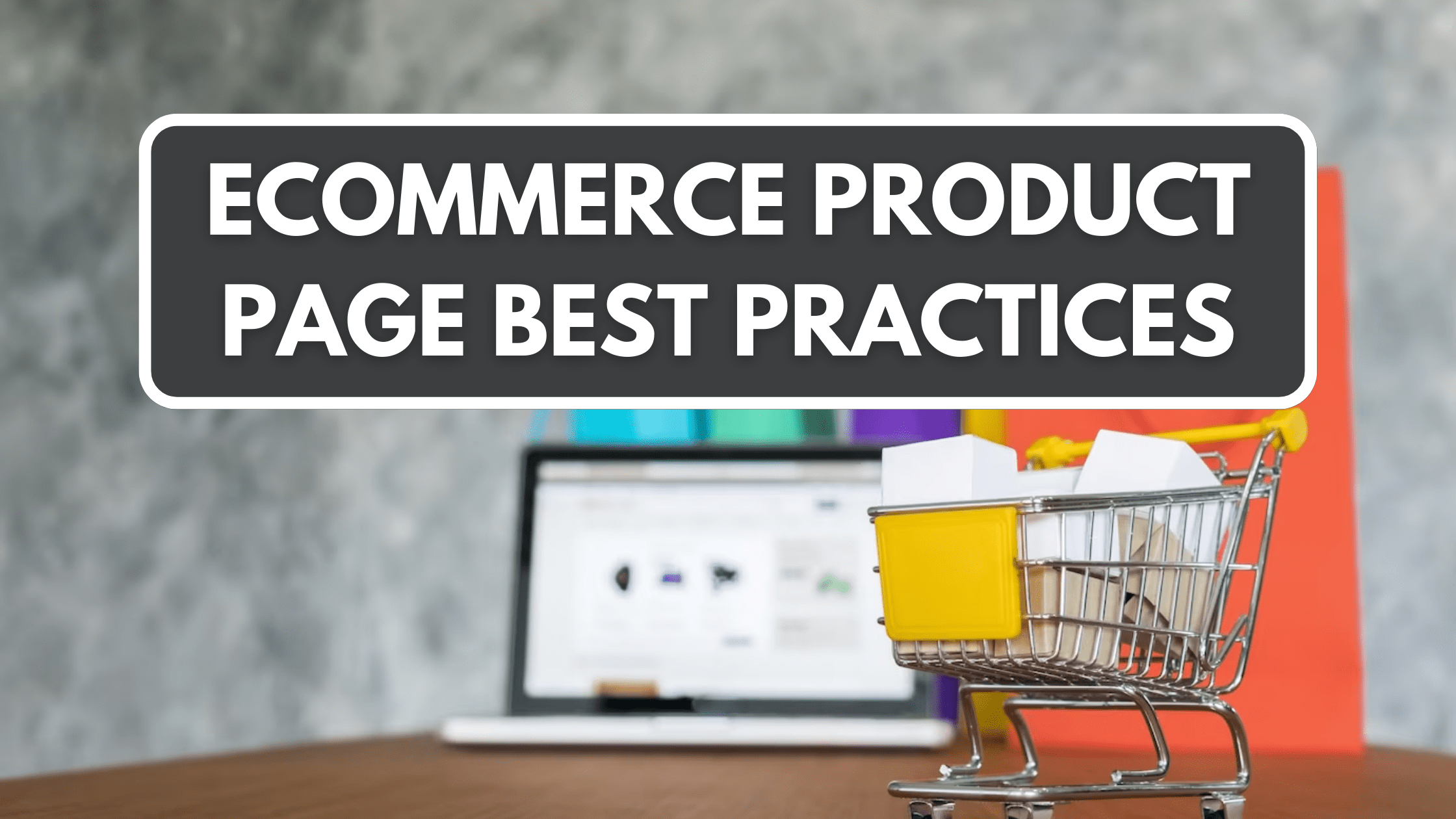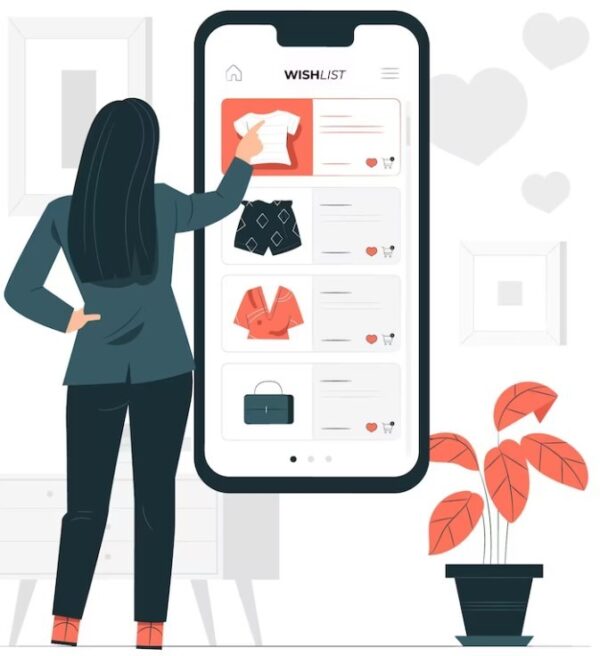7 Ecommerce Must-Have Product Page Best Practices Of 2023

Dolly Tomas | Jul 23, 2023
Reading Time: 7 minutesYou’ve worked hard to get your online store up and running, but have you implemented the product page best practices that drive sales? If not, it’s time to take a closer look at your product pages. They’re the virtual storefront for your ecommerce business, and their effectiveness can significantly impact your bottom line.
Without a well-optimized product page, even the most successful marketing campaigns will fall short.
In this ever-evolving world of ecommerce, keeping up with the latest best practices is a must. So, what can you do to ensure your product pages are hitting the mark? We’ve done the heavy lifting for you, dissecting the most effective strategies of 2023. These aren’t just passing trends but proven methods that top ecommerce sites are implementing to drive sales and retain customers.
Let’s dive in and explore these seven must-follow product page best practices that will transform your product pages into conversion powerhouses.
Add Quality and a Variety of The Product Images
Let’s not forget it’s crucial to add high-quality and diverse images of your product, giving your customers a virtual feel of what they’d actually be buying. This is one of the ecommerce product page best practices you can’t afford to ignore in 2023.
Be sure to include multiple angles and close-ups of the product so that shoppers can examine every aspect of it as they would in a physical store. If possible, include videos showcasing the product in use, as this can help to alleviate any doubts or concerns the customer might have. Remember, the more visually appealing and detailed your product images are, the more likely customers are to make a purchase.
Add a Clear Product Title and Pricing
Make sure your item’s title and cost are instantly apparent, as this clarity can significantly simplify the decision-making process for potential customers. A clear and precise product title that accurately represents the product can help customers understand what they’re buying without any confusion.
Similarly, pricing details should be transparent and easy to find. Hidden charges or unclear pricing can lead to cart abandonment and loss of customers’ trust. As per a study by Baymard Institute, 49% of online shoppers have abandoned carts due to extra costs being too high, making it a critical point you should consider in your ecommerce strategy.
Along with the product title and price, include essential details such as product specifications, available sizes or models, and any discounts or promotions. Use a clear and readable font size and style for this information. You could also highlight the savings if there’s a sale or discount, as this can motivate customers to make a purchase.
Therefore, it’s essential to take these steps to ensure your ecommerce product page is as user-friendly and transparent as possible, increasing the likelihood of customer conversions and sales.
Use Product Descriptions That Focus on Benefits Rather Than Features
When crafting descriptions for your items, focus on highlighting the benefits over the features, painting a vivid picture of how your customer’s life could be improved with their purchase.
Instead of merely listing out the technical specifications or what the product can do, bring attention to how it can solve a problem, meet a need, or fulfill a desire.
For example, instead of saying, “This laptop has a 10-hour battery life,” you can say, “With this laptop’s 10-hour battery life, you can work or play anywhere without worrying about finding a power outlet.”This approach not only makes your descriptions more compelling but also makes it easier for customers to see the value in your product.
Remember, your customer isn’t just buying a product; they’re buying an experience, a solution, or a ticket to a better lifestyle. Therefore, your descriptions should be more than just informative; they should be persuasive and engaging.
Use storytelling techniques, powerful words, and emotive language to make it more appealing. Make sure your descriptions are easy to read and understand. Use bullet points for clarity and brevity, and use SEO-friendly keywords to increase your visibility.
The more effective your product descriptions are, the more likely customers are to buy.
Add a Good and Clear Call to Action (Add to cart / Buy Now)
You’ve got captivating product descriptions, now it’s time to seal the deal with a clear and compelling call to action like ‘Add to cart’ or ‘Buy Now’. Research shows that an effective call to action (CTA) can significantly improve conversion rates.
A clear, visible, and persuasive CTA button is the bridge between a potential customer browsing your product and them actually making a purchase. Your CTA should be noticeable and easy to locate on the page. No customer wants to go on a treasure hunt just to make a purchase. Use contrasting colors, large fonts, and a strategic position on the page to make your CTA button stand out.
But a good CTA isn’t just about visibility. The language you use also plays a crucial role. It should be direct, persuasive, and create a sense of urgency. Phrases like ‘Buy Now’, ‘Add to Cart’, or ‘Limited Stock’ push customers to act immediately. Also, personalize the CTA where possible. Studies have shown that personalized CTAs convert 202% better than default versions.
Create a Sense of Urgency
Creating a sense of urgency can be a game-changer in your business strategy—it’s like adding a little bit of fuel to a customer’s decision-making process.
Limited-time offers, countdown timers, or stock level indicators are proven techniques to drive quick decisions and nudge customers off the fence. For instance, a study by ConversionXL found that when a sense of urgency was created, consumers were 22% more likely to make a purchase.
It’s simple psychology—when customers perceive that they could lose out on a product, they’re more likely to take immediate action.
However, remember that your urgency must be authentic. Using false scarcity or urgency tactics could backfire and harm your brand’s reputation. Instead, consider real-time inventory updates, limited availability of some items, or genuine sales and discounts.
According to a study by Epsilon, 80% of consumers are more likely to make a purchase when offered a personalized experience. So, tailor your messages to make them feel unique and exclusive to each visitor. This approach not only creates urgency but also builds a personalized connection with your customers, making them more likely to buy from you, not just in the present, but also in the future.
Ease Navigation Between Pages with Product Categories Menu
Navigating around your online store should be a breeze for your customers, and a well-structured product categories menu is the key to achieving this.
A product categories menu helps visitors find what they’re looking for quickly and easily, saving them from the frustration of having to sift through numerous unrelated items. It’s like a roadmap, reducing the complexity of your site and making it user-friendly.
Research shows that customers are more likely to make a purchase when they can find what they want with minimal effort.
In 2023, it’s not enough to have a simple list of product categories. You need to ensure your menu is intuitive, clear, and responsive. This means categorizing your products logically and clearly labeling each category.
Also, it’s crucial to make your menu easily accessible on all devices, whether it’s a laptop, tablet, or smartphone. Clean design, sharp images, and succinct descriptions help users grasp the content quickly.
Remember, a customer who can navigate your site efficiently is more likely to convert, and return for future purchases.
Add Customer Reviews to Build Trust with Customers
Incorporating customer reviews into your online storefront can significantly bolster your credibility and foster trust with potential buyers. Shoppers today are savvy and accustomed to researching products before making a purchase. They value the opinions of other customers who have already used a product, often more than the company’s own product descriptions.
A whopping 91% of people regularly or occasionally read online reviews, and 84% trust online reviews as much as a personal recommendation, according to a survey conducted by BrightLocal. By displaying honest reviews—both positive and negative—you’re showing transparency, which resonates with today’s customers and can make them feel more confident in their purchase decision.
In 2023, it’s not enough to merely slap up a few reviews on your product page and call it a day. You need to make these reviews easy to browse, and they should be filterable by factors such as rating or date. Adding a feature that allows customers to share their own photos or videos with their reviews can further increase trust—because seeing is believing, right?
Additionally, responding to reviews—particularly those that offer constructive criticism—demonstrates that you value your customers’ feedback and are committed to improving your products based on their experiences. In essence, showing that you’re actively engaging with your customers’ comments can go a long way in building trust and fostering loyalty.
Final Thoughts on Ecommerce Product Page Best Practices
So, there you have it. You’re now armed with the top ecommerce product page best practices for 2023.
Remember, it’s all about presenting your products in a clear, compelling way with high-quality images, persuasive descriptions, and a sense of urgency.
Don’t forget to ease navigation with product categories and build trust through customer reviews.
These small changes can make a big difference. Start implementing these strategies today and watch your ecommerce success skyrocket.
Frequently Asked Questions
To optimize SEO on your ecommerce product pages in 2023, use keyword-rich product descriptions, ensure mobile-friendly design, leverage user reviews, and improve site speed. Don’t overlook structured data for better search visibility.
Absolutely! You can integrate social media sharing options by adding share buttons next to your products. This’ll allow customers to easily share items they love, increasing exposure and potentially boosting your sales in 2023.
In 2023, expect ecommerce product page designs to embrace AR/VR experiences, personalized content, voice search optimization, mobile-first design, and inclusive accessibility features. These trends will elevate your customers’ shopping journeys and boost conversion rates.
Harness customer feedback to improve your product page. Identify common issues or suggestions shared by your customers. Integrate these insights into your design, enhancing product descriptions, photos, or user interface for a better shopping experience.
Mobile optimization is crucial in 2023 as it boosts your product page’s success. It enhances user experience, increases load speed, and improves search engine ranking, leading to higher conversion rates and sales. Don’t overlook it!



Table of Contents
Add Quality and a Variety of The Product ImagesAdd a Clear Product Title and PricingUse Product Descriptions That Focus on Benefits Rather Than FeaturesAdd a Good and Clear Call to Action (Add to cart / Buy Now)Ease Navigation Between Pages with Product Categories MenuAdd Customer Reviews to Build Trust with CustomersFinal Thoughts on Ecommerce Product Page Best PracticesFrequently Asked QuestionsTable of ContentsAbout the authorLeave a Comment Cancel ReplyAbout the author
Dolly Tomas
Dolly, Revenue Optimization Expert at Build Grow Scale! With a wealth of experience in eCommerce and an extensive background in Customer Service as an Operations Manager, Team Leader, and Project Manager, she's got the secret sauce to boost your bottom line. Armed with a Bachelor's degree in Electronics and Communications Engineering, she's a master of numbers and problem-solving. Balancing her professional achievements with her cherished role as a devoted mother to two cute kiddos, Dolly shows her unwavering commitment to driving revenue growth and her ability to navigate complex challenges make her an invaluable asset to any organization.




